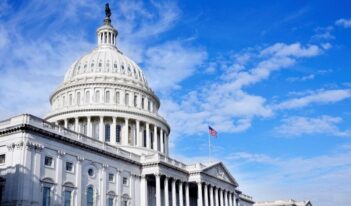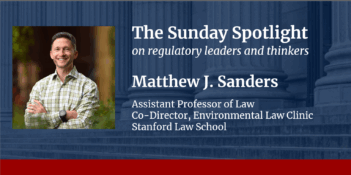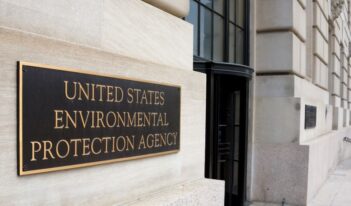
Scholar argues that despite progressive roots, U.S. transparency laws have taken an anti-government focus.
Decrying the perils of big business and financial fraud in the early 1900s, U.S. Supreme Court Justice Louis Brandeis famously said that “sunlight is…the best of disinfectants.” Brandeis’s metaphor for the power of transparency to regulate and rein in the abuses of corporate and governmental power became central to progressive reform in the early 20th century.
But according to a recent paper, the goals of transparency advocates today—and the political and regulatory values associated with Brandeis’s sunlight symbol—have drastically shifted. Despite transparency’s progressive origins, modern advocates now pursue a more libertarian, skeptical bent that aims to make government not more democratic and functional but smaller and less effective.
According to the paper’s author—Columbia Law School professor David Pozen—sunlight laws can return to their progressive origins. But doing so will first require that advocates stop praising transparency as an end in itself and treat open government laws as a complement to, rather than a substitute for, substantive underlying regulation.
Progressives have long believed that shining a light into the shadows of businesses’ operations would expose corporate misconduct and limit corporations’ influence in government. This faith, Pozen argues, pervaded progressives’ advocacy for a wide variety of laws: food quality and labeling laws such as the Pure Food and Drug Act and Meat Inspection Act of 1906, corporate financial disclosure laws, and laws that would require corporations to publicize their wages and workplace safety conditions more openly. Reformers pushed for transparency in government more directly by passing whistleblower protections and the first federal campaign finance disclosure law, along with civil service examination requirements to attack patronage.
These policies—and their emphasis on open government—reflected the progressives’ fundamental faith in the improvement of public institutions and the ability to make them more responsive to the popular will, Pozen writes.
If the progressive era aimed to make government substantively more democratic, the 1960s and 1970s saw a proliferation of new open government laws that pursued similar goals, but through procedural reforms.
Pozen points to the Freedom of Information Act (FOIA), passed in 1966, as the era’s iconic legislative achievement on behalf of transparency. FOIA allows anyone to request records from federal agencies at a small cost, particularly in comparison to the government’s cost of fulfilling the requests. By exposing Congress and federal agencies to the public eye, Pozen writes, FOIA and other laws of the era aimed to prevent “well-heeled insiders” from capturing the legislative and regulatory process, thus improving “the fairness, deliberativeness,” and “public interestedness of their work.”
Starting in the late 1970s, though, open information laws started to be increasingly used for different ends: to reveal administrative dysfunction and make the case for smaller government and less regulation. According to Pozen, corporations—often those under government investigation by federal agencies such as the U.S. Environmental Protection Agency—began to dominate the FOIA requester pool, creating procedural roadblocks and stymying regulators.
Laws that require agencies to open their meetings to the public—such as the Federal Advisory Committee Act and Government in the Sunshine Act—have been transformed in a similar way, Pozen writes. Because of the procedural burdens, agencies have simply stopped using advisory committees or convening agency meetings in the first place, he claims.
Moreover, Pozen argues that laws mandating increased transparency in the legislative process have actually made the process more susceptible to corporate capture. The Legislative Reorganization Act of 1970—which, among other things, allowed congressional committee hearings to be televised and permitted the disclosure of House members’ committee votes—effectively eliminated congressional anonymity. This change actually made it easier for industry lobbyists to track and then influence legislators’ voting records.
Pozen argues that even federal campaign finance disclosure laws have been weaponized to advance deregulatory agendas. As the federal courts began to invalidate laws imposing monetary limits on campaign donations in the early 2000s—culminating with the Supreme Court’s decision in Citizens United v. Federal Election Commission—many judges pointed to disclosure laws on the books as a seemingly adequate means to protect against undue corporate influence in politics.
The rightward drift of transparency laws can be slowed and even redirected, though. To do this, Pozen advocates for changing the political conversation about government transparency, emphasizing transparency as a complementary regulatory tool rather than merely as an end in itself. Without being paired with stronger enforcement mechanisms and funding, Pozen argues that transparency will remain susceptible to politicization.
Pozen’s article, “Transparency’s Ideological Drift,” will appear in the Yale Law Journal.



